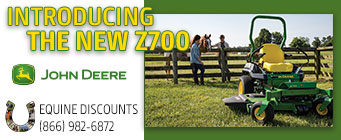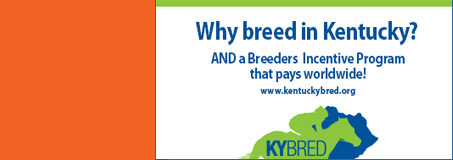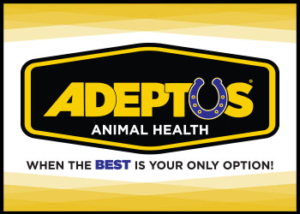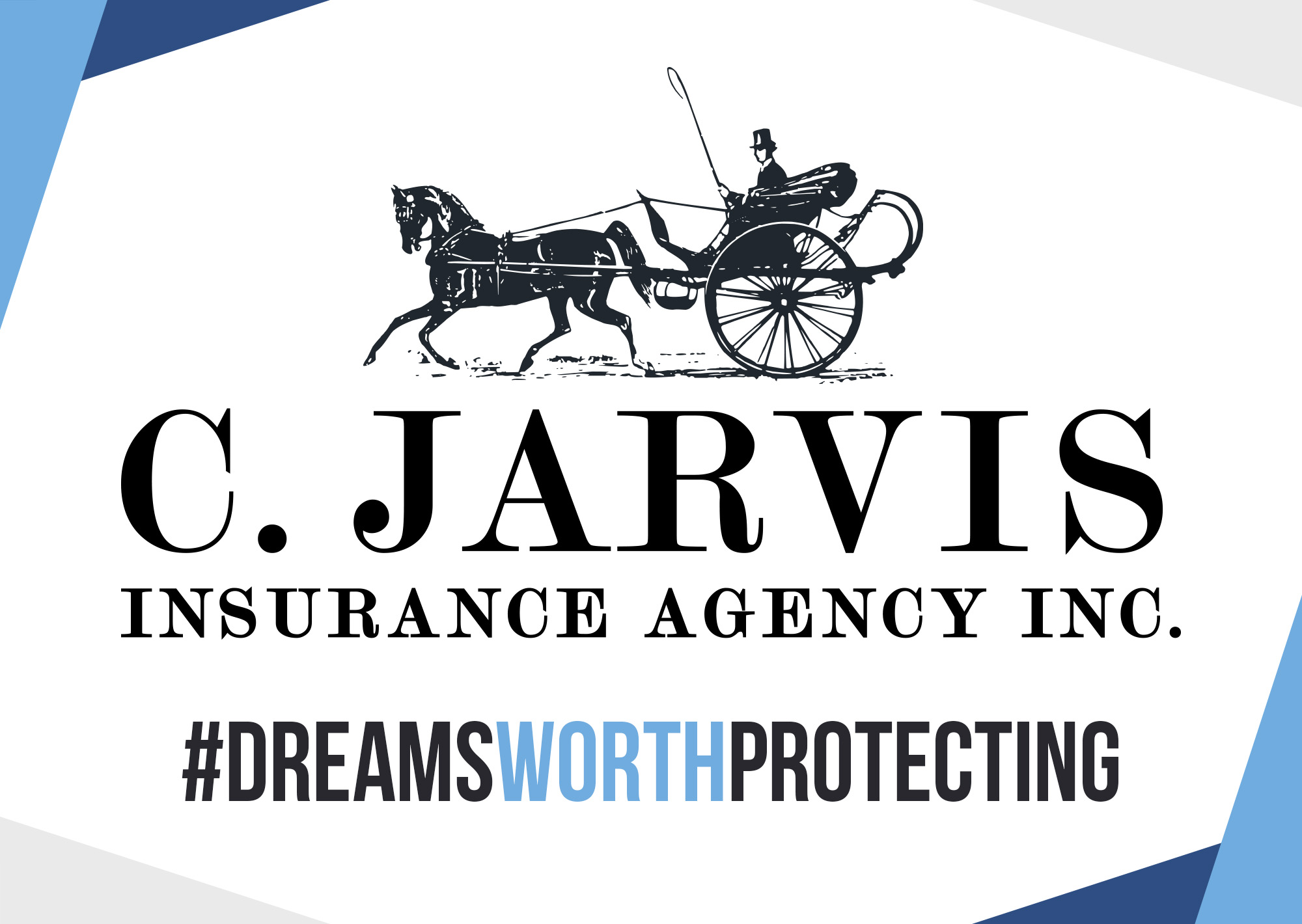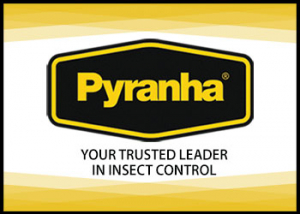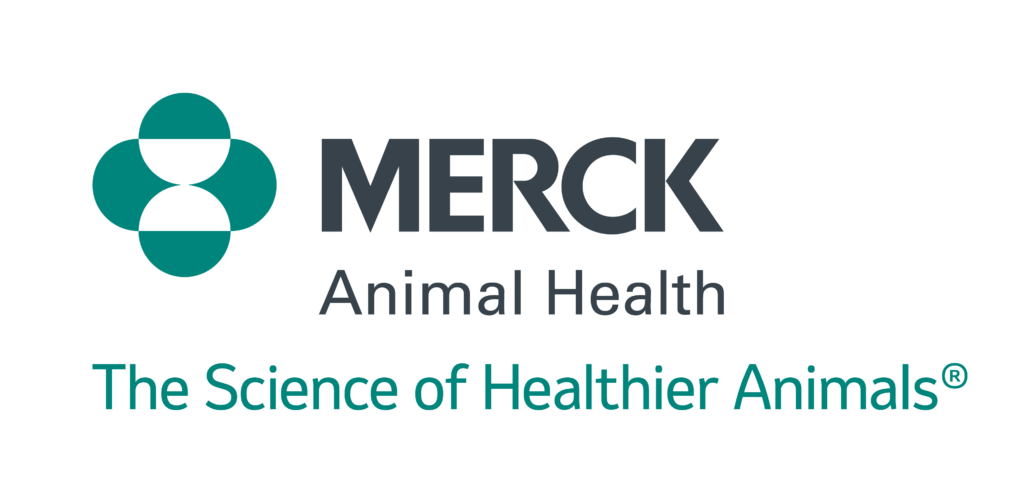Disease Reporting & Surveillance
African Horse Sickness
African Horse Sickness is transmitted by biting midges and flies that occurs regularly in most countries of sub-Saharan Africa. In naive populations of horses, which are the most susceptible equids, mortality may reach 90% in epidemics. The disease, which presents as a pulmonary and/or a cardiac form, is characterized by high fever, depression, and respiratory symptoms. The clinically affected animal has trouble breathing, starts coughing frothy fluid from nostril and mouth, and shows signs of pulmonary edema within four days. Serious lung congestion causes respiratory failure and results in death in under 24 hours.
The introduction of this disease into the United States would have catastrophic implications for the health of our national herd and be insurmountable for the continuity of the domestic horse industry. Horses would be confined to the areas in which they live, live animal export would come to a complete stop, and competitions would be halted nationwide. AHS poses a significant risk to the country, and as such the American Horse Council has long taken a no tolerance stance against the weakening of any regulations that could inadvertently allow this disease to enter the U.S.
The American Horse Council requested a federal review and revocation of Saudi Arabia’s freedom of African Horse Sickness status and encouraged the USDA to solicit industry support before relaxing the status of any other countries in regards to African Horse Sickness pre/post import testing.
The USDA asked the American Horse Council to participant in the development of a diagnostic drill for state and federal animal health officials to use in the identification of African Horse Sickness (AHS) cases in the United States. The US has not had a case of African Horse Sickness outside of laboratory cases and if the US did suffer from an outbreak, it would have disastrous consequences.
The drill was developed and a test drill was run in October of 2021 and was released for Federal and State Animal Health Official use is in early 2022.
Equine Viral Arteritis
The USDA released guidelines for breeding a mare to an EVA shedding stallion. You can review the guidelines here: EVA Uniform Methods and Rules Effective April 19, 2004
Mann-EVA-breed-mare-to-shedder-Proc-USAHA.pdf (horsecouncil.org)
Contagious Equine Metritis
See “Import & Export” below for more details on CEM testing requirements. Contagious equine metritis (CEM) is a venereal disease found in horses caused by bacteria. It is spread during breeding or through contact with contaminated objects. This disease occurs very rarely in the United States and does not affect other livestock or people. However, it is highly contagious among horses and can be difficult to detect and control. Signs of illness in infected mares may not be obvious, and stallions carry the bacteria without showing any signs at all. CEM can have a negative impact on fertility in both mares and stallions. If the disease became widespread in the United States, the horse industry could suffer considerable economic losses.
EPA Engagement
Pyrethrin Scheduled Review
The American Horse Council submitted written comments to the Environmental Protection Agency’s (Agency) Proposed Interim Decision (PID) involving application methods for the insecticide pyrethrin and two synergists, MGK-64 (MGK) and Piperonyl butoxide (PBO). After decades of use, we know these products to be safe, effective and absolutely essentially to the management of key insect pests in barns and animal spaces, critical to animal welfare and rider safety while in use, worker exposure is far less then presented in your documentation, and non-worker exposures are almost eliminated due the biosecurity and safety concerns ever-present at these facilities. The AHC collaborated on comments submitted with several other entities in supporting the continued safe and wise use of these products.
Current Industry Use
Fly control in equine facilities is fundamental to the health, care and use of the animals present. Pyrethrins used with the synergists, PBO or MGK-264, ( pyrethrin +) is the core foundation of many of the fly control programs in use today at animal agriculture facilities. This is because pyrethrin + is the most effective option available, and has decades of use history proving its safety and efficacy.
These are the most effective and safe products for controlling the adult fly populations without the potential for development of resistance. Other products or IPM tools are used in conjunction with pyrethrin + to control insects, but all IPM’s in the US equine industry utilize pyrethrin+ products in a method your PID eliminates. In cases of the federally regulated diseases Equine Infectious Anemia, Vesicular Stomatitis, and Equine Piroplasmosis, USDA protocols require vector mitigation measures including direct application of insecticides labeled for use on horses be implemented as part of the disease response. The American Association of Equine Practitioners’ ectoparasite guidelines for veterinarians recommend pyrethrins and/or PBO as the most widely available products for safe and effective control of ectoparasites on horses.
The most common modes of application in the equine industry are through trigger pump sprayers and misting systems. Misting and spraying methods of application are essential due to the nature of equine behavior, human-horse interactions, and methods of housing/care. Trigger pump sprayers are a ubiquitous component of our industry that stands alone in its place as a critical part of IPM. Horses are easily frightened, and have to be trained at an early age to accept trigger pump spray bottles, and are not as ready to acclimate to other methods of application. Large sprayers, aerosols and wipes are quite triggering for horses, and as such have not found a foothold in our IPM models.
Misting systems are growing in use throughout the animal agriculture due to their lower application costs, reduced labor requirements, and the flexibility and precision they allow in application times, locations and amounts. These systems have been in place within the horse industry for decades. These systems effectively limit human exposure to the pyrethrin + by limiting the amount of hand application. The protections provided by these systems is critical to the usefulness of our industry’s infrastructure.
Pyrethrin + works quickly and has been used for decades without indications of resistance development, and it degrades rapidly without leaving any problematic residue to further increase the risks of resistance developing. The alternative products available and labeled for these uses are either far less effective, require several more applications, or would inevitably drive resistance among the adult fly breeding population. The common IPM methods in use today often involve the use or encouragement of beneficial parasitic wasps at facilities; pyrethrin + is used because it provides adult fly control where the product quickly degrades with no surface residue reducing or eliminating risks to the wasp population.
Worker Exposure
We contend that EPA’s assumptions for material handled in treating horses is a large over-estimate. In EPA’s revised assessment, we also note that ‘veterinary/groomer’ scenario does not pose any occupational risks of concern. We contend that even though two bottles per day is already a large over-estimate on typical usage, this use pattern is more in line with the typical practices of horse owners than the direct animal treatment assumptions of 30 animals treated per day at a rate of 0.03 lbs ai/animal for pyrethrin+. This estimate far exceeds any reasonably likely treatment scenarios for horse caretakers due to practical time constriction associated with the work of trainers, caretakers, or other boarding stable employees working with horses. Most caretakers would not have time to treat (and work) more than 5-6 horses per day.
Further, the amount of material applied per animal would never approach 0.03 lbs ai of pyrethrin+ for all animals, much less single animals. An average consumer intended 32 oz spray bottle (of a 0.1% pyrethrin+ product) results in use of about 0.5 fluid ounces of product per horse per day. This estimate corresponds to 0.0003 lbs pyrethrin+ applied per animal. Even assuming a 5 times stronger product being used (0.5% pyrethrin+) yields an estimate of 0.0015 lbs ai applied per animal. This means that EPA’s estimate of 0.03 lbs ai/animal for pyrethrin+ is between 20-fold and 100-fold higher than actual application rates used by animal caretakers for direct daily treatments to horses.
No workers in any horse boarding or care facilities would be treating more than 5-6 animals per day, noting that simultaneous treatments of >10 animals per day would instead be done using automated barn misting systems, which will be discussed in more detail later in our comments. Traditional daily care of a horse that includes application of pyrethrin+ would also include the use or exercise of that animal, which would limit the opportunity to interact with and treat more than 5-6 animals per day.
We contend that between EPA’s large over-estimates on handling assumptions for workers treating horses (both in the number animals assumed treated per day and pounds ai of pyrethrin+ assumed to be applied per animal) and the very high benefits associated with such products, EPA would be well-supported in retaining the use of trigger pump spray bottle products for use on horses without additional mitigation. However, if still EPA believes that some form of mitigation will be needed, stakeholders noted that a reasonable handling limitation on labels (e.g., “do not apply more than one bottle per day of this product”) would be workable and practical for horse caretakers and allow for continued access to these critically important products.
Numerous products registered for residential use, including pyrethrins-based total release foggers, contain label statements that protect both users and bystanders. In discussion with retail product manufacturers, several are amiable to similar label statements requiring product use in well-ventilated areas would be practical and workable for use on pyrethrin+ trigger spray bottle products used by horse owners.
More generally, we recognize that horse owners already use a wide variety of FDA-labeled animal care and veterinary products and assume numerous occupational risks in the ownership and care of horses. We suggest that for practical purposes, spray-bottle pesticide applications to horses fall clearly within the realm of occupational exposure and not residential exposure, though we understand the sensitivities and legal uncertainties this space presents to EPA.
Bystander Exposure in Stables
It is widespread practice in all large equine operations to practice strict biosecurity practices. It is extremely rare for any person not working at a facility to be allowed entry into a building, and if it happens it is only under controlled circumstances that involve staff supervision. A critical issue facing our industry’s facility management includes the risk to bystanders presented by the animals often erratic behavior. Liability concerns surrounding bystander safety have fundamentally change the relationship horse owners have with the general public, and the extends to allowing bystanders within the immediate area surrounding an animals reach, which is significant. Any estimates of non-worker exposure to the pyrethrin + products used in the animal houses should take these points into account.
Conclusion
The PID mentions the EPA’s conclusion that cancellation of these products would not result in significant loss of efficacy or economic impacts for users. We empathically disagree with this assumption and we have successfully relayed our concerns. The comments received by the EPA resulted in their decision to delay any decision until 2024.
Health Canada, the Canadian equivalent of the EPA, has now banned indoor structural broadcast applications to control flies and mosquitoes in livestock and poultry housing facilities and pressurized products used in metered-release devices. While this has no direct effect on US regulations, there is concern this may set an international precedent for a 2024 EPA decision.
The AHC will continue to work with the industry, the USDA and the larger Livestock industry to prevent this critical product from being taken away from horse owners, riders and caregivers.
Proposed Regulation of PFOA and PFOS as CERCLA Hazardous Substances
In fall of 2022 the EPA released a notice of proposed rulemaking to designate PFOA and PFOS as CERCLA Hazardous Substances. The Comprehensive Environmental Response, Compensation, and Liability Act, aka CERCLA or “Superfund”, authorizes the EPA to specify substances as hazardous and would require facilities across the country to report any PFOA or PFOS above the designated threshold and hold them liable for all costs associated with the clean up.
While this was not brought to the attention of the AHC until after the comment period has closed, many comments were submitted on behalf of agriculture stakeholders.
What are PFOA/PFOS, and where are they found?
PFOA or PFOS, are known as “forever chemicals. They are ubiquitous in everyday commercial products such as waterproofed clothing (and horse blankets), nonstick cooking products, firefighting foam, and more. Scientific studies have shown that exposure to PFAS in the environment may be linked to harmful health effects in humans and animals.
Because there are thousands of different PFOA/PFOS chemicals, and they are found in so many different consumer, commercial, and industrial products, it is challenging to study and assess the potential human health and environmental risks. It is not yet fully understood what level of PFOA/PFOS exposure is unsafe, and what the long-term health impacts may be.
PFOA/PFOS initially entered the environment through manufacturing and disposal processes and ultimately ended up in human and animal drinking water. This has created a cycle where the PFOA/PFOS are then consumed and excreted through waste, then further absorbed into the water table and also potentially into plants and livestock, once again re-entering the human food chain. PFOA/PFOS contamination has been found on every continent, in the ocean, in the soil, in snowflakes and raindrops, and in human fetal cells.
Unbeknownst to farmers, sludge and fertilizer from wastewater treatment plants were not able to filter out PFOA/PFOS, resulting in it being spread onto crops and pasture lands during routine field work.
PFOA/PFOS Thresholds, Testing, and Impacts of a CERCLA ruling
In March 2023 the EPA released proposed thresholds for PFOA/PFOS found in water and soil. These thresholds are considered extremely low and currently are set below what is considered testable levels.
Several states, including Maine and New Mexico have set requirements for PFOA/PFOS levels that have resulted in some farms being shut down for contamination. There is concern that federal CERCLA designation with levels held to the current recommended thresholds would cause many farms to be designated Superfund sites and forced to shut down.
A coalition of agriculture stakeholders, including the AHC, is consulting with parties experienced in CERCLA designations to delay this ruling and encourage the EPA to prioritize research associated with PFOA/PFOS safety thresholds and appropriate cleanup strategies. The coalition is also working to encourage the EPA to provide an agricultural exemption. The EPA has announced a final decision will be made by August 2023.
Environmental Regulations and Large-Scale Equine Facilities
Over the last several years the American Horse Council has been monitoring situations involving long-term/permanent equine holding facilities and the pressures placed on them due to environmental regulations in their state. California, in particular, has placed undue pressure on equine facilities bordering waterways, to the degree that several facilities may close down. Water Management and Environmental Protection laws in these cases are the product of state regulatory action. The singular Federal language of note used in the enforcement of these regulations concerns the definition of a concentrated animal feeding operation, or CAFO. CAFO’s are described as small, medium, or large, with large facilities being designated as permanently housing 500 animals or more throughout the year.
As state regulations change the environmental needs of communities in rural areas, oftentimes large CAFOs are expected to meet waste management, water runoff, and large-scale infrastructure requirements that are uncommon and often unnecessary to meet the needs of equine operations. Unfortunately, the designation of large CAFOs is unlikely to be changed at the federal level. As such, the horse industry needs to take active action at the state level to prevent burdensome regulatory action or pursue equine specific exemptions in States with existing environmental regulations.
AHC staff have taken steps to prioritize the development of strategies and actions that can be taken on behalf of the industry at large. This includes educational materials for horse owners and peer organization outreach to raise awareness of the hostile actions being taken by environmental groups towards agricultural interests.
The American Horse Council will continue to monitor the situation and facilitate what actions can be taken in Washington DC.
Equine Nutrition
CBD and Hemp Based Feed Products
The American Horse Council has joined a letter to seek support for greater education and research on a topic that impacts many aspects of equine regulation and production, as well as the safety and well-being of horse owners and caregivers. Following discussions within the AHC concerning CBD usage in the equine feed sector, the industry made their concerns regarding the current interest in using hemp, including its derivatives and by-products (herein collectively referred to as “hemp”), in animal feed. It is our position that sufficient scientific research to support the safety and utility of hemp in animal feed must be completed prior to any Federal or state approval. We understand the importance of supporting the hemp industry, and yet we also believe it is simply too soon to know whether hemp is safe and effective for horses as marketed. Our goal is for more research to ensure the safety and well-being of the public, our animals and our industry. Scientific research is needed.
Interest in the use of hemp in commercial animal feed has accelerated since the passage of the 2018 Agricultural Improvement Act (“Farm Bill”). While the Farm Bill expanded the legal production of hemp in the United States, the use of hemp in animal feed remains under the jurisdiction of the U.S. Food and Drug Administration (FDA) and state regulatory programs for commercial animal feed. However, many state leaders and lawmakers are being asked to circumvent Federal and state oversight by considering legislation that will allow the use of hemp in animal feed in their respective states before the completion of the critical scientific research to affirm the safety of hemp — and before the necessary review by the FDA. Safety mechanisms and procedures are critical. Every day, Americans purchase food for their horses with the reasonable expectation that it is safe, and that the nutritional benefits claimed on the label are supported. While consumers have this expectation, most are unaware of the scientific research and regulatory reviews that are in place to affirm the safety of animal feed ingredients.
Currently, no hemp ingredients have been approved through the established animal feed ingredient review pathways. It would be imprudent to bypass these established procedures needed to protect both human and animal health and unilaterally legislate approval of animal feed ingredients at the state level. Concerns should be addressed. We are concerned that state leaders and the general public may not be fully aware that any new ingredient intended for animal feed must go through a scientific and legal review process to ensure safety and utility. Therefore, we wish to highlight three specific concerns regarding the inclusion of hemp in animal feed prior to the necessary research and regulatory review.
First we have concerns about the health and safety of our horses. Although research is underway, it is limited and not conclusive. Some parts of the hemp plant have the potential to serve as sources of nutrition in many animal diets. However, it is not yet clear whether animals fed hemp-based diets will perform similarly to animals fed traditional diets that farmers and ranchers depend on today. Even hemp that is compliant with existing regulations for production contains ∆9-THC (<0.3%) and other cannabinoids. There is not a conclusive understanding of the long-term impacts of these compounds on the health of animals and results of existing research raise safety concerns. To achieve approval for use in animal feed, scientific evidence supporting long-term safety and utility is needed before commercial use. Additionally, there are concerns about legal implications for horse owners and feed manufacturers. Even if a state legalizes hemp for use in animal feed, the use of the ingredient is not yet approved at the Federal level. Animal feed containing hemp that crosses state lines is subject to Federal regulation and could be considered adulterated under the law. The pursuit of review through established processes will effectively address all state and Federal regulatory requirements, granting access to local, national, and global markets. Without Federal review, the access for producers and manufacturers to interstate and global markets can be negatively impacted. Recommended actions are doable and achievable. Instead of initiating statutory or administrative approval of hemp in animal feed at the state level, we recommend that state leaders and proponents of hemp in feed work through the defined regulatory pathways used for every animal feed ingredient. We urge state leaders to support research through universities or private labs so that the safety and utility of hemp can be fully understood before it is allowed for commercial purposes. [/av_toggle] [av_toggle title='Import & Export' tags='' custom_id='' av_uid='av-ht2wu' sc_version='1.0'] Proposed Amendments to Import Regulations
The United States Department of Agriculture’s (USDA) Animal and Plant Health Inspection Service (APHIS) sought public comments on proposed amendments to its import regulations for horses. These proposed amendments would better align their regulations with international standards and allow both APHIS and the equine industry more flexibility for permitted imports, while continuing to mitigate the risk of bringing equine diseases, such as contagious equine metritis (CEM), into the United States. The proposed regulations also provide APHIS with more regulatory authority to enforce standards for transporting horses. The official announcement and links to comment are found at:
https://www.federalregister.gov/documents/2021/11/29/2021-25613/import-regulations-for-horses
These amendments touch on USDA documentation, CEM, VEE, Screwworm, shipping container transport, castration, and several country-specific import changes.
The regulations contain special provisions for the importation of horses that have been temporarily exported to a region where CEM exists. Currently, horses exported from the United States or another region not known to be CEM-affected are allowed to spend up to 60 days in a CEM-affected region and be re-imported into the United States without having to undergo CEM testing, provided certain conditions are met. They are proposing to amend the regulations to extend the temporary export period to 90 days, while maintaining the same separation and documentation requirements. Other changes are as follows:
- Standardize requirements that CEM testing samples from stallions be collected by an accredited veterinarian.
- Add clarifying language that the day after the date of breeding should be considered the first day of CEM quarantine protocols.
- Amend the regulations to state that test mares used for CEM testing must be marked with the letter “T, or other permanent identification approved by APHIS”
- States must agree to provide oversight during the test breeding of CEM quarantined stallions.
- Add horses transiting through regions APHIS considers to be affected with CEM would be required to apply for an import permit and fulfill all other conditions listed in § 93.304(a) that are currently only required of horses imported directly from these regions.
- Add the phrase “or other attestation regarding the health of the animals” to this sentence in order to further clarify the nature of the information that APHIS may require. Such additional attestation may include requiring certain subsets of horses to provide certification that the horses have not been exposed to other pests or diseases beyond the diseases already addressed in the health certificate, if necessary.
- Clarify that the provisions apply to horses intended for quarantine at Federal quarantine facilities as well, in order to reflect current practices more accurately.
- Clarify current health certification regulations to increase compliance. This includes requiring that certifications are prepared and issued directly from the national government of the region of origin or annotated by the national government of the region of origin to indicate how the documentation may be verified; requiring that origin and destination addresses are listed on the certificate; and requiring identifying information regarding the horse or horse test specimens, importer, and exporter are listed on the health certificate.
- Require that, if applicable, health certificates confirm that the horse has not been castrated during the 14 days preceding exportation. They would also require that castrated horses be accompanied by a certificate of castration.
- Require that horses be accompanied by documentation stating that a pre-export examination occurred within 48 hours of the horse’s export in order to further ensure that horses imported into the United States are free of pests and diseases of livestock and fit to travel at the time of export.
- Amend the regulations to remove distinctions between temporary and permanent import by removing the requirement that horses presented for permanent importation receive an inspection prior to entry. Currently, horses from Canada temporarily imported into the United States may enter through any Canada-U.S. land border port that allows entry of animals without an APHIS inspection, whereas horses from Canada permanently imported into the United States must receive an inspection prior to entry. Requirements that currently apply to both temporarily imported and permanently imported horses would remain the same; horses would be allowed to enter the United States when accompanied by an official, Canadian Food Inspection Agency-endorsed health certificate issued within 30 days of the date of entry into the United States and when there are negative results of a test for equine infectious anemia taken within 180 days of entry.
- Clarify existing policy by adding to § 93.319 that all horses imported from or transiting Central America and the West Indies are required to have obtained an import permit in accordance with § 93.304; this requirement is currently implied by the heading of the section, but not overtly stated in the text.
- Amend the regulations to include a paragraph that addresses the requirements for shipping containers, including disinfection requirements, as well as measures to ensure that horses are transported safely. They are proposing to present these requirements as performance standards in the regulations. Guidance on how to meet these requirements would be found in the Live Animal Regulations (LAR), as amended, published by the International Air Transport Association (IATA).
- Require that, for Spanish pure breed horses, the health certificate state that the horses have been in Spain for a minimum of 60 days immediately prior to export. For racing thoroughbreds from France, Germany, Ireland and/or the United Kingdom, the health certificate must state that the horses have been in one or more of these countries for a minimum of 60 days immediately prior to export. They are proposing these changes in response to confusion about what the phrases “from Spain” and “from France, Germany, Ireland, and the United Kingdom” mean in the context of horses referred to in this paragraph.
- Add the words “and identification” after the word “activities” to better describe the information the veterinarian is required to examine. The regulations currently require the veterinarian issuing health certificates to certify that he or she has examined the records of the horse’s activities maintained by a breed association.
- Add the words “including the competition or event records” after the words “the records kept by the trainer” to provide veterinarians with more detailed guidance on which records they are required to examine. The current regulations require the veterinarian to compare records kept by the breed association to records kept by the horse’s trainer.
- Clarify that prohibition on breeding applies to both live and artificial breeding. For Spanish pure breed horses from Spain, the veterinarian is currently required to examine the breed association’s records to ensure that breeding of the horse has never been attempted since the horse reached 731 days of age.
- Make a minor editorial change to this section by adding the word “racing” in front of the words “thoroughbred horses from France, Germany, Ireland, and the United Kingdom” in the introductory text to paragraph (d).
- Clarify that horses imported from regions where screwworm exists must also obtain an import permit in accordance with § 93.304.
- Clarify existing policy by adding that horses imported from regions where VEE exists must obtain an import permit in accordance with § 93.304 in addition to all other requirements listed.
- Add a sentence stating that horses completing quarantine in the United States must obtain an import permit as described in § 93.304 in order to clarify existing policy. Section 93.321 outlines the import permit and inspection requirements for horses imported from Mexico.
The proposed rule changes include several issues which have been at the forefront of our industry’s outreach for more than 10 years. The U.S. horse industry strongly supports the USDA’s efforts in modernizing their regulatory language, particularly where it concerns our continually evolving international equine transportation sector. However, there are several points where we highlighted suggested changes that may create unnecessary burdens or insufficiently address known areas of concern.
Contagious Equine Metritis
The USDA’s continued prioritization of policies and practices that have prevented the reintroduction of Contagious Equine Metritis (CEM) are well-recognized and equally appreciated. This successful campaign is not without frustration, as many in our industry feel the lack of technological advances in testing has continued to impose harsh burdens on our competition sector and their opportunities globally. The extension of the 60-day waiver to 90 days is a welcome step in addressing this hurdle. In light of the overwhelming support this change has within the equine industry and the USDA’s own statements regarding the minimal threat posed by this rule change, the American Horse Council requested the USDA implement this aspect of the proposed rule change as soon as possible, even preemptively applying this rule to animals traveling during the 2022 competition season.
Business Continuity
Standardization in import testing and documentation are also well needed steps in facilitating hassle-free international transport. Several proposed changes will require additional foreign government support, which may pose threats to business continuity should they be unable or unwilling to comply with new USDA expectations. The American Horse Council requests a thorough investigation into the logistical impacts of these changes before setting definitive implementation dates. While industry partners are willing to help facilitate common sense changes to the importation process, the burden of negotiating these changes with foreign governments and staff should not be solely carried on their shoulders.
Castration
The new documentation requirements for geldings remains unclear in it’s practical implementation and should be simplified and consolidated with already existing health inspection documents and procedures. The burden of validation is significantly different in attesting that an animal has not been castrated within the last 14 days as opposed to the specific date an animal was castrated, potentially decades before a health certificate was issued. We are confident that the 14-day window proceeding importation is what is significant and what should be prioritized.
Animals in Transit
We would like to elevate the concerns of USDA stakeholders regarding new documentation requirements for animals in transit immediately preceding export to the United States. Specifically, these concerns stem from the nebulous terminology introduced in this rule by the USDA and opaque nature of who these new requirements would apply to. We strongly request for the USDA to solicit more stakeholder input addressing logistical concerns surrounding additional inspections before implementing the new 48 hour rule as presented.
CEM testing procedures are critical to protecting U.S. horse herd health. However, these procedures pose an unacceptable risk to horses in international competition. In light of this risk, U.S. equine athletes are at a competitive disadvantage due to excessive travel which shortens show season. Over the last 5 years, during the annual APHIS Stakeholders’ meeting, the equine community has requested a change in the CEM testing rule by USDA-APHIS leadership. USDA-APHIS officials have indicated that changing from a 60-day waiver to a 90-day waiver is possible, and indeed warranted.
The American Horse Council requested an immediate transition from the current waiver to one allowing competition horses to spend 90 days in CEM affected countries without requiring testing upon returning to the United States as long as such horses have not been used for breeding during the period they have been out of the country.
Highway Transportation
Final Rule on Electronic Logging Devices
Over the past months the American Horse Council (AHC) has reached out to the equine community to determine the potential impact of the upcoming Electronic Logging Device mandate. Based on the information received, the AHC, in collaboration with the rest of the animal agriculture community, has requested that the Department of Transportation (DOT) grant a one-year enforcement delay followed by a waiver and limited exemptions from compliance with the December 18, 2017 implementation date for the Final Rule on Electronic Logging Devices (ELDs) and Hours of Service (HOS). Additionally, we requested that the DOT address the significant problems with the mandate that will occur if the compliance deadline is not extended. The welfare, safety, and health of the animals in transit, together with the safety of other drivers on the road, are top priorities for the equine industry and its enthusiasts.
The livestock sector has consistently been one of the safest of the commercial hauling sectors. The Large Truck Crash Causation Study, conducted by the Federal Motor Carrier Safety Administration (FMCSA) and the National Highway Traffic Safety Institute, showed that of 1,123 accidents involving trucks hauling cargo, only five involved the transportation of livestock. Similarly, the report titled Trucks Involved in Fatal Accidents Fact-book 2005, conducted by the Transportation Research Institute, shows that livestock transporters accounted for just 0.7 percent of fatal accidents. The ELD mandate itself, which is the subject of this petition, does nothing to improve that record of safety over paper logs.
While this figure is not irrelevant, and any safety improvements should be considered, the trajectory of this rule’s implementation has left much to be desired. Despite its being issued nearly two years ago, awareness of this rule among livestock haulers and the equine industry is nearly non-existent. For instance, FMCSA’s recent change to include livestock in its interpretation of the 150-air mile exemption for agricultural commodities, a change that the industry strongly supports and appreciates, has raised many additional questions from livestock haulers who are unsure about the mechanics of the new exemption and even if it means they are exempt from the ELD mandate altogether. More time is needed to reach out to the horse industry, and ensure that industry outreach can address ELD compliance and ELD impact.
Many horse operations and competitions are in rural areas, routinely requiring long, and repeated, trips. These animals, when loaded onto trailers, are vulnerable to changes in temperature, humidity, and precipitation. Horse haulers are accustomed to managing these changing conditions through planning, log books and notations in those books. These planning techniques have adapted and evolved over decades as technology has improved. Unfortunately, the quick transition to ELDs does not allow for the natural trial and error process to adequately meet the needs of the horse industry.
The equine industry and the millions of horse fans who attend equine events rely on safe and effective methods of transportation from every corner of the United States. Domestic transit of our competition and breeding animals is critical to the business continuity of our industry and largely relies on the use of large commercial haulers. These individuals have expressed their concern with the implications of this rule in regards to the negative impacts to standards in welfare, biosecurity and cost.
We are disappointed that the FMCSA did not feel the need to reach out to the larger livestock industry stakeholders prior to finalizing this rule, but specifically for not reaching out to the equine industry considering the constant and repeated travel inherent to the competitive, coast to coast nature of our industry. While horse haulers are able to provide more accommodating shipping conditions compared to other livestock sectors, the issues we have with immediate implementation of the rule mirror those of the larger animal agriculture community.
The American Horse Council will continue to petition for an enforcement delay, to be followed by a waiver and/or limited exemptions from compliance with the final rule on ELDs, and specifically the expected Hours of Service (HOS). Additionally we will continue to take advantage of any opportunity to collaborate with FMCSA and the DOT during this delay to better meet the needs of the animal agriculture community on future regulatory efforts.
FMCSA Responds to AHC Request
The Federal Motor Carrier Safety Administration (FMCSA) followed their recent meeting with AHC staff, a meeting in response to the AHC request for clarification, by releasing two documents on the existing Commercial Driver License (CDL) regulations and how those regulations impact the horse industry. The AHC is appreciative of the horse specific efforts that FMCSA have taken to quell the concerns of our recreational enthusiasts.
The guidance titled “Agricultural Exceptions and Exemptions to the Federal Motor Carrier Safety Administration Hours of Service (HOS) and Commercial Driver’s License (CDL) Rules” and “Non-Business Related Transportation of Horses” explain how published FMCSA guidance provides an exception for the transportation of horses when the transportation in question is not business related (neither for compensation, nor where the driver is engaged in an underlying business related to the move). In these cases, the Federal Motor Carrier Safety Regulations do not apply, even if prize or scholarship money is offered. This includes the Hours-of-Service (HOS) regulations, requirements for Electronic Logging Devices (ELD) and CDL regulations, unless required by the driver’s home state. Both documents contain example scenarios that may help horse owners better understand the regulations as they exist today.
The documents can be found on the FMCSA website at;
https://www.fmcsa.dot.gov/hours-service/elds/non-business-related-transportation-horses
https://www.fmcsa.dot.gov/hours-service/elds/agricultural-exceptions-and-exemptions-federal-motor-carrier-safety
The AHC will continue to pursue clarifications until the industry is satisfied that there are no unintended consequences from current CDL or ELD regulations. The AHC will take action where clarifications are not sufficient, including the continued collaboration with the entire livestock industry to get a delay in ELD enforcement.
DOT has established a specific email address for agricultural specific questions at agricultural@dot.gov . This address will be used to generate a future F.A.Q. page.
Find AHC resources at https://horsecouncil.org/eld-mandate-cdl-requirements/
Import & Export
Proposed Amendments to Import Regulations
The United States Department of Agriculture’s (USDA) Animal and Plant Health Inspection Service (APHIS) sought public comments on proposed amendments to its import regulations for horses. These proposed amendments would better align their regulations with international standards and allow both APHIS and the equine industry more flexibility for permitted imports, while continuing to mitigate the risk of bringing equine diseases, such as contagious equine metritis (CEM), into the United States. The proposed regulations also provide APHIS with more regulatory authority to enforce standards for transporting horses. The official announcement and links to comment are found at:
https://www.federalregister.gov/documents/2021/11/29/2021-25613/import-regulations-for-horses
These amendments touch on USDA documentation, CEM, VEE, Screwworm, shipping container transport, castration, and several country-specific import changes.
The regulations contain special provisions for the importation of horses that have been temporarily exported to a region where CEM exists. Currently, horses exported from the United States or another region not known to be CEM-affected are allowed to spend up to 60 days in a CEM-affected region and be re-imported into the United States without having to undergo CEM testing, provided certain conditions are met. They are proposing to amend the regulations to extend the temporary export period to 90 days, while maintaining the same separation and documentation requirements. Other changes are as follows:
- Standardize requirements that CEM testing samples from stallions be collected by an accredited veterinarian.
- Add clarifying language that the day after the date of breeding should be considered the first day of CEM quarantine protocols.
- Amend the regulations to state that test mares used for CEM testing must be marked with the letter “T, or other permanent identification approved by APHIS”
- States must agree to provide oversight during the test breeding of CEM quarantined stallions.
- Add horses transiting through regions APHIS considers to be affected with CEM would be required to apply for an import permit and fulfill all other conditions listed in § 93.304(a) that are currently only required of horses imported directly from these regions.
- Add the phrase “or other attestation regarding the health of the animals” to this sentence in order to further clarify the nature of the information that APHIS may require. Such additional attestation may include requiring certain subsets of horses to provide certification that the horses have not been exposed to other pests or diseases beyond the diseases already addressed in the health certificate, if necessary.
- Clarify that the provisions apply to horses intended for quarantine at Federal quarantine facilities as well, in order to reflect current practices more accurately.
- Clarify current health certification regulations to increase compliance. This includes requiring that certifications are prepared and issued directly from the national government of the region of origin or annotated by the national government of the region of origin to indicate how the documentation may be verified; requiring that origin and destination addresses are listed on the certificate; and requiring identifying information regarding the horse or horse test specimens, importer, and exporter are listed on the health certificate.
- Require that, if applicable, health certificates confirm that the horse has not been castrated during the 14 days preceding exportation. They would also require that castrated horses be accompanied by a certificate of castration.
- Require that horses be accompanied by documentation stating that a pre-export examination occurred within 48 hours of the horse’s export in order to further ensure that horses imported into the United States are free of pests and diseases of livestock and fit to travel at the time of export.
- Amend the regulations to remove distinctions between temporary and permanent import by removing the requirement that horses presented for permanent importation receive an inspection prior to entry. Currently, horses from Canada temporarily imported into the United States may enter through any Canada-U.S. land border port that allows entry of animals without an APHIS inspection, whereas horses from Canada permanently imported into the United States must receive an inspection prior to entry. Requirements that currently apply to both temporarily imported and permanently imported horses would remain the same; horses would be allowed to enter the United States when accompanied by an official, Canadian Food Inspection Agency-endorsed health certificate issued within 30 days of the date of entry into the United States and when there are negative results of a test for equine infectious anemia taken within 180 days of entry.
- Clarify existing policy by adding to § 93.319 that all horses imported from or transiting Central America and the West Indies are required to have obtained an import permit in accordance with § 93.304; this requirement is currently implied by the heading of the section, but not overtly stated in the text.
- Amend the regulations to include a paragraph that addresses the requirements for shipping containers, including disinfection requirements, as well as measures to ensure that horses are transported safely. They are proposing to present these requirements as performance standards in the regulations. Guidance on how to meet these requirements would be found in the Live Animal Regulations (LAR), as amended, published by the International Air Transport Association (IATA).
- Require that, for Spanish pure breed horses, the health certificate state that the horses have been in Spain for a minimum of 60 days immediately prior to export. For racing thoroughbreds from France, Germany, Ireland and/or the United Kingdom, the health certificate must state that the horses have been in one or more of these countries for a minimum of 60 days immediately prior to export. They are proposing these changes in response to confusion about what the phrases “from Spain” and “from France, Germany, Ireland, and the United Kingdom” mean in the context of horses referred to in this paragraph.
- Add the words “and identification” after the word “activities” to better describe the information the veterinarian is required to examine. The regulations currently require the veterinarian issuing health certificates to certify that he or she has examined the records of the horse’s activities maintained by a breed association.
- Add the words “including the competition or event records” after the words “the records kept by the trainer” to provide veterinarians with more detailed guidance on which records they are required to examine. The current regulations require the veterinarian to compare records kept by the breed association to records kept by the horse’s trainer.
- Clarify that prohibition on breeding applies to both live and artificial breeding. For Spanish pure breed horses from Spain, the veterinarian is currently required to examine the breed association’s records to ensure that breeding of the horse has never been attempted since the horse reached 731 days of age.
- Make a minor editorial change to this section by adding the word “racing” in front of the words “thoroughbred horses from France, Germany, Ireland, and the United Kingdom” in the introductory text to paragraph (d).
- Clarify that horses imported from regions where screwworm exists must also obtain an import permit in accordance with § 93.304.
- Clarify existing policy by adding that horses imported from regions where VEE exists must obtain an import permit in accordance with § 93.304 in addition to all other requirements listed.
- Add a sentence stating that horses completing quarantine in the United States must obtain an import permit as described in § 93.304 in order to clarify existing policy. Section 93.321 outlines the import permit and inspection requirements for horses imported from Mexico.
The proposed rule changes include several issues which have been at the forefront of our industry’s outreach for more than 10 years. The U.S. horse industry strongly supports the USDA’s efforts in modernizing their regulatory language, particularly where it concerns our continually evolving international equine transportation sector. However, there are several points where we highlighted suggested changes that may create unnecessary burdens or insufficiently address known areas of concern.
Contagious Equine Metritis
The USDA’s continued prioritization of policies and practices that have prevented the reintroduction of Contagious Equine Metritis (CEM) are well-recognized and equally appreciated. This successful campaign is not without frustration, as many in our industry feel the lack of technological advances in testing has continued to impose harsh burdens on our competition sector and their opportunities globally. The extension of the 60-day waiver to 90 days is a welcome step in addressing this hurdle. In light of the overwhelming support this change has within the equine industry and the USDA’s own statements regarding the minimal threat posed by this rule change, the American Horse Council requested the USDA implement this aspect of the proposed rule change as soon as possible, even preemptively applying this rule to animals traveling during the 2022 competition season.
Business Continuity
Standardization in import testing and documentation are also well needed steps in facilitating hassle-free international transport. Several proposed changes will require additional foreign government support, which may pose threats to business continuity should they be unable or unwilling to comply with new USDA expectations. The American Horse Council requests a thorough investigation into the logistical impacts of these changes before setting definitive implementation dates. While industry partners are willing to help facilitate common sense changes to the importation process, the burden of negotiating these changes with foreign governments and staff should not be solely carried on their shoulders.
Castration
The new documentation requirements for geldings remains unclear in it’s practical implementation and should be simplified and consolidated with already existing health inspection documents and procedures. The burden of validation is significantly different in attesting that an animal has not been castrated within the last 14 days as opposed to the specific date an animal was castrated, potentially decades before a health certificate was issued. We are confident that the 14-day window proceeding importation is what is significant and what should be prioritized.
Animals in Transit
We would like to elevate the concerns of USDA stakeholders regarding new documentation requirements for animals in transit immediately preceding export to the United States. Specifically, these concerns stem from the nebulous terminology introduced in this rule by the USDA and opaque nature of who these new requirements would apply to. We strongly request for the USDA to solicit more stakeholder input addressing logistical concerns surrounding additional inspections before implementing the new 48 hour rule as presented.
CEM testing procedures are critical to protecting U.S. horse herd health. However, these procedures pose an unacceptable risk to horses in international competition. In light of this risk, U.S. equine athletes are at a competitive disadvantage due to excessive travel which shortens show season. Over the last 5 years, during the annual APHIS Stakeholders’ meeting, the equine community has requested a change in the CEM testing rule by USDA-APHIS leadership. USDA-APHIS officials have indicated that changing from a 60-day waiver to a 90-day waiver is possible, and indeed warranted.
The American Horse Council requested an immediate transition from the current waiver to one allowing competition horses to spend 90 days in CEM affected countries without requiring testing upon returning to the United States as long as such horses have not been used for breeding during the period they have been out of the country.



